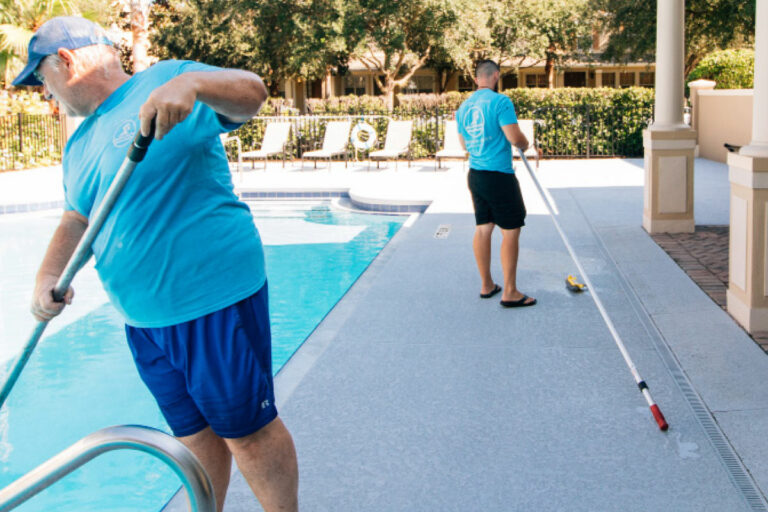The Great Labor Crisis

A Google search on the state of labor in the pool industry reveals an ocean of ominous headlines chronicling talent shortages, cross-company poaching, a perception problem and even an epidemic of suicide among construction workers.
But if the labor crisis is real, some companies seem to be immune. Many businesses, no doubt, are caught in a cycle of high turnover and disappointing interviews — but many others are not. So is the labor shortage the result of external forces crushing small businesses, or can owners find both the problem and solution within their own companies?
An Economic Crisis and a Cultural Shift
Jack Manilla is the president of Florida-based Portofino Pools and Outdoor Living, as well as the chairman of the board of the Association of Pool and Spa Professionals. For him, the labor shortage is very real, and it can mostly be traced to the 2008 financial crisis.
“As home and commercial construction slowed to a halt, workers in all trades were out of work,” Manilla says. “Subsequently, many migrated to other occupations and when recovery occurred, the shortage was pronounced.”
But macroeconomic forces, according to Manilla, are only part of the problem. He expressed resentment toward what he perceives as the idolization of tech careers, a stigmatization of the trades and a “cultural belief that everyone should attend college.”
“There always have and always will be people who prefer to work with their hands and their minds,” he says. “The pool and spa industry offers a great opportunity for a long-term career path in pool construction and services, distribution, manufacturing and retail.”
The Industry Responds
Aware of the crisis — or at the least the perception of a crisis — the APSP earmarked $1.3 million for the creation of a workforce-development initiative designed to meet the industry’s demand for workers. Manilla says the program consists of “primarily live events and educational courses leading to professional trade certifications.”
Rick Woemmel is the president and founder of Missouri-based Bi-State Pool & Spa, as well as a member of the APSP National Builders Council.
He says the APSP program allows participants to achieve certifications in stages, the same way academics can pursue associate, bachelor’s, master’s and doctoral degrees.
Woemmel wants business owners to see the value of buying into such programs, which he says justifies the upfront expense by increasing both employee performance and retention.
“Training costs money, but it pays off in the long run,” he says.
But no amount of guidance from an industry association can help a business attract and retain top talent if the business itself doesn’t prioritize its employees.
It Could be an Industry Thing, But it’s Probably a You Thing
William A. Kent is a former national president of the APSP and CEO of Team Horner, which owns brands like HornerXpress, TropiClear, TileXPressions, Stone Hardscapes and Lion Pool Products.
If a shortage of talent is plaguing pool and spa businesses, Kent says a healthy dose of introspection might benefit the owners of those businesses far more than any trade organization training program.
“This widespread conversation about a shortage of workers isn’t the real problem,” Kent says. “People want to work, but they want to work at a place where they’re happy. If someone is having a hard time getting good employees, it might be because they don’t run a very good company.”
Kent says he believes the industry’s labor woes are real, but he also thinks many of the wounds are self-inflicted.
“There is a shortage,” Kent says, “but supply and demand being what it is, the quality companies are going to attract and keep employees faster and better than the companies that are run poorly.”
When asked if the industry has done a satisfactory job creating careers for prospective employees, Kent took issue with the question itself.
“Industries don’t create careers,” he says. “Companies create careers for their employees. Careers are there for people who want to stay for a long time, but they’re only going to stay for a long time if they’re working in a creative, positive environment.”
Good Workplaces Attract Good Workers
Kent knows a thing or two about creating positive work environments.
In 2015, Team Horner was honored with the prestigious American Psychological Association Psychologically Healthy Workplace Award for the state of Florida among midsize companies. The next year, Team Horner won not just the state of Florida, but earned the APA’s national award after being selected as the best among all the other state winners.
The award isn’t given lightly. Teams of psychologists prowl candidate businesses for weeks, visit job sites and interview employees. The APA determined Team Horner’s company culture makes employees feel recognized and respected, that their work-life balance is prioritized and that their efforts are appreciated.
None of this was news to Kent.
After nearly half a century of ownership, Kent has 460 employees, at least 100 of who claim more than a decade with the company. At least half his workforce has been there for more than five years. Far from struggling to find good help, Kent sees a steady stream of prospective employees come to him.
“We get a lot of referrals through word-of-mouth from people who already work in the industry who call and say, ‘do you have any jobs because I want to come and work for you,’ ” Kent says.
So what’s his secret?
“We don’t have any secrets,” he says. “Employees who come here feel like they’re part of a team, part of a group that will help each other, who care about each other and who will go out of their way and stretch for each other. My abiding principle is that I have a shared fate with the employees. When times are good and we’re profitable, there’s profit sharing.”
For Woemmel, the way to foster a connection with employees is by leading from the front.
“I don’t say that I’m a boss or say ‘these are my employees,’ ” he says. “I call everyone co-workers. I’m not above doing anything they do.”
It shows. Bi-State earned five stars out of five on employer review site Glassdoor.com. One reviewer wrote “Management is hands on and always willing to help. Even company president will roll sleeves up and help out in the field.”
Manilla, too, says a strong company culture is more powerful than any labor shortage.
“Those firms that best understand the psychological and social needs of its workforce, and continuously self-educate their owners, managers, supervisors and team leaders in meeting these needs, will see positive results in long-term worker retention,” he says. “It most certainly is not a master/slave management style.”
Three Ingredients for Finding Good Help in Tough Times
All three men agree on three shared beliefs.
First, the best employees are attracted to companies with strong values, and values must come from the top down.
“Long-term worker loyalty starts with the owners’ and their managers’ personal beliefs and values being all in alignment,” Manilla says. “Then, through the interview process identifying candidates with similar beliefs and values and hiring them.”
For Kent, it’s less about hiring employees who share your values and more about setting the tone from the CEO’s office.
“At the grassroots level, the business culture is controlled by the values system of the owner of the company,” he says. “That values system reflects either a happy workplace or an unhappy workplace depending on how the owner behaves when relating to his employees. That has a huge impact on how motivated people are and how they feel about working in the company.”
The second rule is that employee-centric cultures must include room for upward mobility.
Woemmel employs hundreds of workers, including seasonal staff and lifeguards, but retains a core, year-round workforce of about 50, many of whom have stayed with him for more than a dozen years. That loyalty, he says, was earned by promoting those who deserve it.
“Our vice president in charge of construction started as a laborer on the bottom rung and is now responsible for millions of dollars worth of projects a year,” he says.
Kent, too, promotes from within. The man he groomed and chose as his successor joined the company in 1979 unloading trucks. He’s now the chief operating officer.
Finally, there’s education.
All three men stress the importance of training, not in the initial few weeks or months of employment, but as a recurring, ongoing part of work and life. Perpetual education and evaluation not only gives their employees the tools they need to succeed, but it also lets owners single out the motivated few who deserve to climb the ladder.
In the end, the owners who treat their employees as replaceable and expendable will likely find their business staffed by workers who view their positions not as careers, but as stopgap jobs, no matter what programs the APSP creates. Those who invest in their staffs and create cultures that recognize their efforts and individuality will likely end up with employees who want to stay put.
“It’s not our job to find people,” Woemmel says. “It’s our job to find people, train those people, pay them and keep them.”





